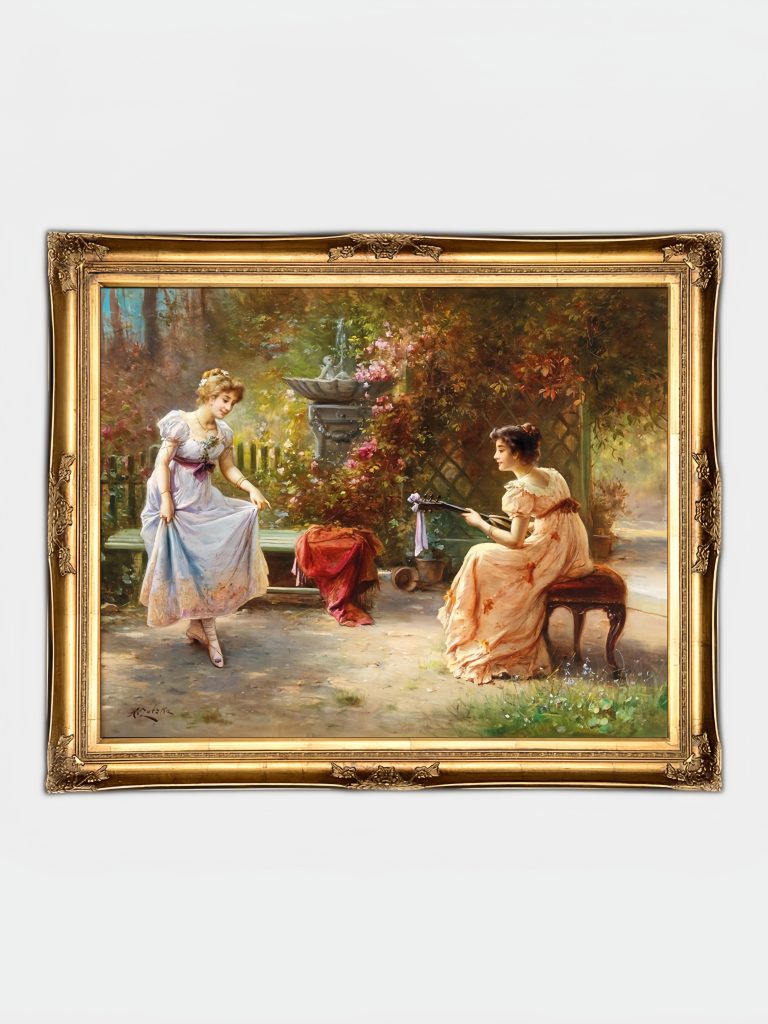Cultivating Aesthetic Sensitivity in Hand-Painted Oil Art: A Structured Approach
Developing a refined aesthetic for oil painting requires intentional engagement with art history, active observation, and consistent practice. Unlike technical skills, which can be honed through repetition, aesthetic growth demands curiosity, critical analysis, and exposure to diverse artistic traditions. Below are actionable strategies to deepen your visual literacy and enhance your artistic judgment.
Immersing Yourself in Art Historical Contexts
Understanding the evolution of oil painting across cultures and eras provides a foundation for aesthetic development. Begin by exploring major movements such as the Renaissance’s focus on realism, the Baroque’s dramatic lighting, or Impressionism’s emphasis on capturing fleeting moments. Analyze how artists within each period approached composition, color, and texture to convey emotion or narrative. For example, study how Caravaggio used chiaroscuro to create tension, or how Monet’s brushstrokes dissolved forms into light and atmosphere.
Visit museums and galleries regularly to observe original artworks up close. Pay attention to how pigments interact over time—cracked varnishes, faded hues, or layered glazes reveal techniques that photographs often obscure. Take notes on compositions that resonate with you, noting their use of balance, rhythm, or contrast. Online platforms like digital museum archives or art history documentaries can supplement in-person visits, offering access to global collections and scholarly interpretations.
Engaging in Critical Analysis of Masterworks
Aesthetic growth hinges on your ability to dissect and articulate what makes a painting effective. Choose a handful of iconic oil paintings and study them in detail. Ask questions such as: How does the artist guide the viewer’s eye through the composition? What emotional response does the color palette evoke? Are there symbolic elements that add layers of meaning? For instance, analyze Vermeer’s use of soft light to create intimacy or Goya’s dark tones to convey unease.
Practice writing short critiques of artworks, focusing on formal elements like line, shape, and space, as well as conceptual aspects like theme or context. Over time, this habit trains your eye to notice subtleties and strengthens your ability to communicate aesthetic preferences. Join online forums or local art groups to discuss interpretations with others, exposing yourself to perspectives that challenge your own.
Experimenting With Composition and Color Theory
Aesthetic sensitivity is not passive—it requires hands-on exploration. Set aside time for small-scale studies that focus on specific aesthetic principles. For example, create a series of compositions using the rule of thirds, then compare them to centered arrangements to see how balance affects visual interest. Experiment with color schemes like monochromatic, analogous, or complementary palettes to understand their emotional impacts. A warm red-orange background might evoke energy, while a cool blue-green one suggests calmness.
Limit your palette for certain exercises to train your eye to see relationships between hues. For instance, use only earth tones to paint a landscape, forcing yourself to rely on value and texture rather than bright colors for impact. Gradually reintroduce other pigments, observing how even small additions alter the mood. Document these experiments in a sketchbook, noting which approaches align with your aesthetic goals.
Studying Light and Atmosphere in Natural Settings
Oil painting’s strength lies in its ability to replicate light’s complexities. Spend time sketching outdoors or observing how light interacts with surfaces indoors. Notice how sunlight filters through leaves, casting dappled shadows, or how artificial light flattens forms in a room. Pay attention to atmospheric effects like fog, which softens edges, or rain, which intensifies colors. These observations will inform your studio work, helping you create more believable and evocative scenes.
Practice painting the same subject at different times of day to see how light changes its appearance. A still life bathed in morning light might feature cool blues and delicate transitions, while the same setup under noon sun could display sharp contrasts and warm yellows. This exercise deepens your understanding of color temperature and value, enabling you to manipulate them intentionally for aesthetic effect.
Seeking Feedback and Embracing Constructive Criticism
Aesthetic development thrives on dialogue. Share your work with peers, mentors, or online communities, asking for specific feedback on composition, color, or emotional impact. Be open to critiques that highlight areas for improvement, such as awkward proportions or muddy color mixing. Use this input to refine your approach, focusing on one or two aspects at a time to avoid overwhelm.
Participate in workshops or life-drawing sessions where instructors provide guided critiques. These settings often expose you to diverse techniques and philosophies, broadening your aesthetic vocabulary. Remember that criticism is not a reflection of your worth as an artist but a tool for growth. Over time, you’ll learn to discern which suggestions align with your vision and which to set aside.
Curating Your Visual Environment
Your surroundings influence your aesthetic choices. Surround yourself with artworks, photographs, or objects that inspire you, whether through their color, form, or concept. Visit flea markets, botanical gardens, or architectural landmarks to gather references that spark creativity. Create mood boards—physical or digital—that compile images, textures, and quotes reflecting your evolving tastes.
Limit exposure to overly commercial or trend-driven content, which can stifle originality. Instead, seek out independent galleries, art films, or literature that encourage deep thinking. The more varied and thoughtful your influences, the richer your aesthetic will become.
By combining historical study, critical practice, and experimental exploration, you’ll cultivate a nuanced aesthetic that distinguishes your hand-painted oil work. This journey is ongoing—each painting, critique, and observation refines your vision, bringing you closer to articulating your unique artistic voice.
